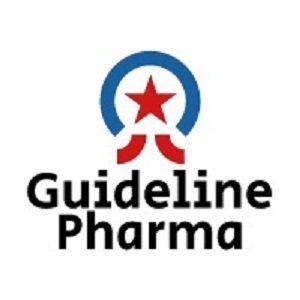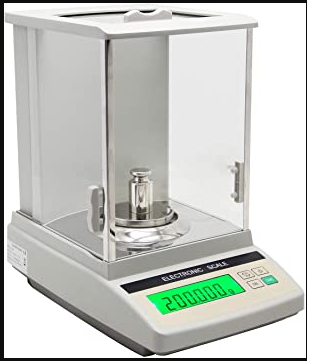SAMPLING, RELEASE, AND RETENTION OF SAMPLES OF RAW MATERIAL
PROCEDURE
SAFETY/PRECAUTION
During sampling RLAF should be ON before 15 minutes.
Keep RLAF ‘‘ON’’ during sampling activity.
Always take one or more than one containers of one batch at a time inside the sampling booth as per feasibility for sampling.
Switch OFF the RLAF after completion of sampling.
Use PPEs like Gloves, and masks during sampling.
Ensure the cleaning of the sampling booth before sampling.
Check relative humidity and temperature before initiating the sampling.
Sampling procedure
The warehouse/ Store person will receive the material and GRN and A. R. No. of material shall be generated automatically through SAP.
QC Person will plan the sampling based on GRN received.
QC person shall identify the number of containers to be sampled and take the SAMPLED LABEL as per the quantity required.
QC person shall carry the sampling tools, self-lock poly bag, tie band, etc. for sampling.
The QC person shall verify the raw material i.e. Name of material, B. No., Mfg. date, Exp. Date, Manufacturer name, Supplier name, number of containers, the total quantity, Quality under inspection label (affixed by Store), etc., and details shall be mentioned in the sampling check list.
In case of any discrepancies observed during the inspection, the QC person shall inform to Quality Control Manager for corrective action.
QC Person shall verify manufacturer COA before sampling for compliance and physical condition of containers.
After physical inspection as per the observation sheet, the analyst shall enter in sampling area after wearing the gowning and PPEs, like gloves, Nose mask, etc.
Before sampling, QC personnel shall ensure the cleaning of the sampling area & sampling booth and ensure the sampling environmental condition (temperature & RH, deferential pressure, etc.)
If the environmental condition is not suitable for sampling then inform engineering personnel to maintain the same and record it in the respective log book.
All the containers should be cleaned externally, from which the sample is to be withdrawn and the containers are transferred to the sampling area.
after verification of all the above parameters, the analyst shall proceed with the sampling.
A sampling of Hygroscopic material shall be done immediately after opening the container and closing the container immediately after sampling.
QC Person shall collect the sample in a double sample poly bag and shall be stored at respective storage condition. In case of hygroscopic nature, Material will be stored in Desiccator. If storage conditions are not defined material will be stored at a controlled room temperature (NMT-25°C).
Light-sensitive material sampling shall be done under a sodium lamp and the sample shall be collected in a black sample poly bag.
After sampling the used sampling tools will be placed in an LDPE polybag with the label TO BE CLEANED to avoid spillage and cross-contamination and shall be taken back to a designated area for cleaning by QC personnel.
The sample quantity is defined based on parameters as per respective STP and the same quantity mentioned as per RM quantity justification.
The analyst shall bring the container one by one at a time under RLAF which is to be sampled and cut the tie lock of the container and poly bag with the help of a cutting device.
To avoid the possibility of contamination, the QC personnel should not obstruct the airflow, particularly in the place where the material is to be sampled.
A sampling rod or Spatula will be used for sampling of solid material and a Liquid sampler will be used for Liquid.
Observe the visual appearance of the material for any abnormality like discoloration, lumps, non-characteristic odor, foreign matter, and physical heterogeneity, and inform to Q.C. Manager for further course of action.
Samples for microbiological testing, wherever applicable, shall be collected preferably in a sterilized sample container/ Sterilized sample bag by QC Person and collect the sample for chemical testing.
In the case of active pharmaceutical ingredient identification test (By IR) will be performed from each Container. So withdraw about 500mg or the required quantity from every container in separate poly bags for identification test, withdrawal quantity can be decreased/increased based on the number of containers.
The sample quantity shall be withdrawn as per the quantity and withdrawn approximately equal quantities from all the containers/packs to make a ‘Pooled Sample” and ‘Reference retained sample’ such that the quantity of the reference retained sample is twice the quantity of pooled sample. The total quantity shall include the sample required for initial analysis and the quantity required for reference retained sample.
Take samples from the top, middle, and bottom for the solid sample from each container.
Pooled Sample quantity can be increased according to the received number of containers the quantity.
Pooled samples shall be prepared in the sampling booth, after the completion of sampling. If pooled sample quantity is significantly more compared to the required quantity, same shall be segregate the extra quantity in separate poly bags and kept the inside the original container separately in tightly closed poly bags. Also during dispensing same material shall be used for manufacturing the product.
The retention sample shall be segregated in a retention sample container under LAF and labeling shall be done in QC. Details of the retention sample shall be maintained.
After sampling ‘‘SAMPLE FOR ANALYSIS” Label stick to the bottle/ polybags in which samples are taken with appropriate information.
Close the containers/packs properly after sampling and affix ‘SAMPLED’ labels which have been duly signed, on the label.
After sampling analyst record all relevant entry in the respective log book and bring the sample to the QC lab for analysis.
The analyst shall deduct the sampling quantity from the total quantity received through SAP.
The inward register for RM will be generated electronically through SAP.
Temperature and RH monitoring, Balance calibration, and differential pressure shall be checked and verified only on the day or before sampling. If the sampling booth is not in use verification is not required daily.
In case of sampling booth is not using for a long time then booth cleaning, monitoring, and balance verification shall be done on a monthly basis.
Sampling Plan:
All active (API) raw materials shall be sampled from all the containers i.e. Sampling 100%.
All excipients shall be sampled as per √ n + 1 containers sampling plan. Where n is the total number of containers.
In the case of Propylene Glycol (PG) and Glycerine, sampling shall be done 100% (By considering all containers) and all tests excluding RS will be performed from Pooled Sample. For the RS test separate- separate Pool samples will be prepared from every five containers. In the case of the last Pooled sample, containers are less than five, the same will be considered for the next pooled sample. For example No. of containers are 22. 5 Pooled samples will be prepared and the last pool will be prepared from 2 containers. Also, the average results of all pooled samples will be considered for final reporting.
If the total number of excipients container is five or less than five, 100% containers shall be sampled, and if √n + 1 value is less than 05, a minimum of 05 containers shall be sampled.
After sampling, the sampled label will be affixed to the sampled container. After analysis, the Approved/ Rejected label will be pasted. Approved / Rejected label will be affixed by covering the “Under Quality Inspection” on the Under Quality Inspection Label.
A sampling of Liquid materials:
In case of more weight/ Big size containers of Liquid material, sampling shall be done at the designated place of the liquid storage area.
For the liquid sample, take the sample from the bottom of the container after properly mixing with the help of the SS liquid sampler, transfer the sample to the stoppered flask or bottle.
Management of Raw Material Samples
After sampling, QC personnel shall store the sample in Desiccator or as per respective storage conditions.
The sample shall be kept under control temperature at the designated place and shall be allocated on a priority basis for analysis.
During analysis, the analyst shall record the analysis as per the respective worksheet or blank analysis worksheet if required. After reviewing the report, the sample will be discarded as per the respective procedure.
In case, If multiple consignments of API are received from the same manufacturer batch/Lot No. on the same day with the same transportation on different GRNs, samples shall be done from 100% containers and a single pooled sample shall be prepared for complete analysis however identification test shall be performed for individual containers /bags. The same results of the pooled sample shall be reported on all the COAs (report of analysis) against all the GRNs.
In the case of excipients except for PG and Glycerine, if the same batch is received as a repeat batch at the site within a month, the material can be released based on identification and description test.
The raw material sample shall be destroyed as per the respective SOP.
In case of outside testing for a repeat batch (same lot/ batch number received again), results will be transcribed from the initial analysis and multiple out testing of the same batch will be avoided.
Release / Rejection of Raw materials
After analysis, the QC person shall prepare the respective COAs in SAP & print the APPROVED or REJECTED labels.
Inventory transfer will be updated in the respective warehouse by SAP during approval/ rejection of material.
In case any container fails the identification test, the entire consignment or single container shall be rejected based on the Head-QA decision.
QC person affixes the Approved or rejected label on each container as per respective A. R. No. after approving the COA. Also, manufacturer-approved labels shall be defaced by making a cross on the label for better understanding.
Any commercial consignment shall be tested within 40 days from the date of receiving at the site and within 30 days after the date of sampling. In case outside testing is required in material, the same shall be released within 40 days from the date of sampling.
Retain sample of Raw materials
Retain samples shall be prepared only for API and solid excipient raw materials, Liquid samples and Sucrose shall not be considered for retention samples.
In case of the same material of the same batch number will receive, the Material will not be considered for retention sample again.
Raw material retained sample should be kept in a plastic container and tight properly. And affix the label “Raw Material Retained sample”.
The quantity of raw material retained sample should be according to the minimum for two complete analyses performed except BD, TD, Sieve analysis, and Microanalysis.
If the sample is hygroscopic and light sensitive then it will be kept in a self-locking LDPE poly bag and then in HDPE or amber-coloured bottle.
Bottle of Retain samples of raw materials shall be kept in a corrugated box and handed over to QA for a place in the control sample room.
The retained sample (control sample of raw material) should be kept specified quantity as per the raw material quantity justification format.
At end of every month, the RM sample inward shall be printed through the SAP system and filed as an Inward log.
Label colored shall be specific, as a Sampled label in the blue colored, sample for analysis and RM retain the sample in white, Approved in green colored and rejected label in red colored.
Retain sample shall be stored up to the expiry date plus 1 year of the material.



